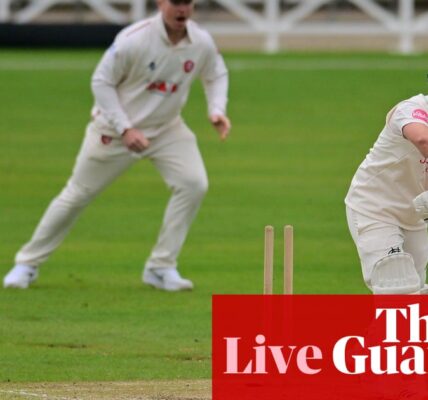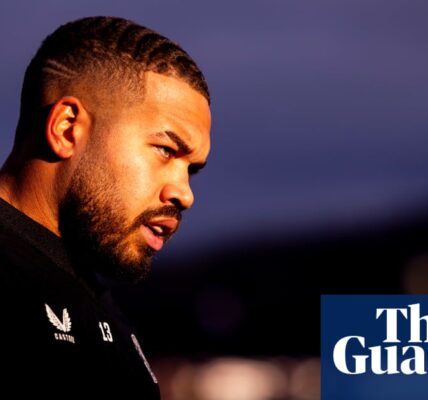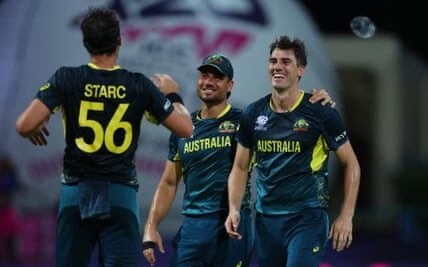
Sid Going, who has died aged 80, won 29 Test caps as a rugby union scrum-half for the All Blacks between 1967 and 1977, and made 86 appearances in all for New Zealand, captaining them five times. A taciturn man, he was nonetheless fluent in the language of rugby, and was one of the greatest of All Blacks scrum-halves.
Prematurely bald and with a distinctive drooping moustache, Going featured during the 1970s in a fierce rivalry with the world’s leading scrum-half, Gareth Edwards. Like the Welshman he was quick and physically strong – during an era in which any player in the No 9 shirt was at the mercy of marauding back-row forwards if he lacked speed and strength.
The pair of them met in the game that is still considered the finest international of all time, when the Barbarians beat Ian Kirkpatrick’s All Blacks in Cardiff in January 1973. For once Going was eclipsed by his rival, and interviewers found it extra difficult to prise opinions from him about the game.
Going was born in Kawakawa, a small town in the north of New Zealand’s North Island. His parents, Mary (nee Paki) and Cyril, were farmers, and Sid was of Maori descent on his mother’s side. He and his four brothers attended Northland College in Kaikohi, and Sid then went to the Mormon-run Church College of New Zealand before moving, aged 19, to Alberta in Canada to begin missionary work.
The pull of home was great, though, and Going returned to New Zealand, where he began to take rugby seriously. His brothers, Brian and Ken, played for the Northland side, and on his return home Sid, who was already attracting the attention of New Zealand’s selectors, was picked to play for North Auckland and New Zealand Maori.
Ahead of Going in the pecking-order of New Zealand scrum-halves was the outstanding Chris Laidlaw, but Going forced himself into the All Blacks team for his debut against Australia in 1967. The All Blacks won 29-9 and by the time Going scored two solo tries in a win over France in Auckland the following year the No 9 shirt was in his hands.
They were safe hands, and Going proved to be a shrewd player with an excellent tactical kicking game. Before the golden age of Welsh rugby, New Zealand and South Africa were vying to become the premier rugby union side in the world. The All Blacks tour to South Africa in 1970 was mired in controversy. The apartheid regime only agreed to accept Going and his fellow Maori, the brilliant wing Bryan Williams, by giving them “honorary white” status. It was humiliating for the players and shameful for New Zealand’s rugby authorities that they agreed to the deal.
Going continued to be the star turn for North Auckland in the 70s. He was one of the main reasons an astonishing 40,000 fans would often be shoehorned into Whangarei’s Okara Park to watch the side, including for a match against the British Lions in 1971, when John Dawes’s touring side marvelled at some brilliant scissors moves from Brian, Ken and Sid Going in a narrow win for the Lions.
Going’s All Blacks career ended with the Lions tour in 1977. In the windy city of Wellington he scampered away for a typical try that inspired a 16-12 win over Phil Bennett’s side in the first Test. But he was replaced by Lyn Davis after the second Test in Christchurch, which the Lions won, and the All Blacks went on to win the series without the man who had made the No 9 shirt his own for a decade.
Going was appointed OBE as soon as his international career had ended, and when he retired from playing the following year he continued to farm back home in Northland with his wife, Colleen, whom he had married in 1969.
In addition he became a selector and coach for Northland. Famous for never swearing, even in the most trying of circumstances he preferred to express any displeasure at his players with the words “blinking” and “flipping”, and his austere personality often set him apart in the beery, matey world of rugby union.
His three passions in life were his family, rugby and the Church of Jesus Christ of Latter-day Saints, in which he became a bishop for a period of seven years.
He is survived by Colleen and their five children, two of whom, Jared and Milton, also played top level rugby union.
Source: theguardian.com



